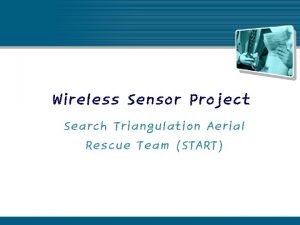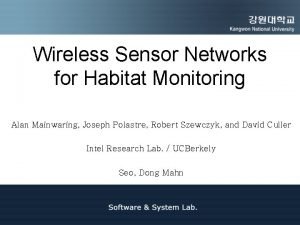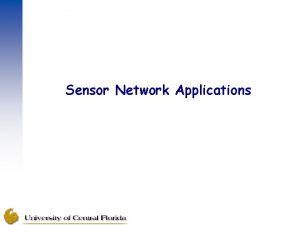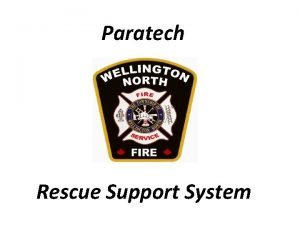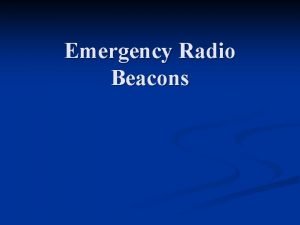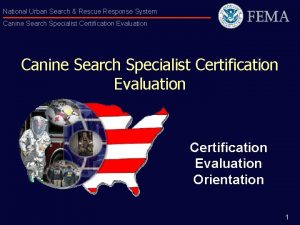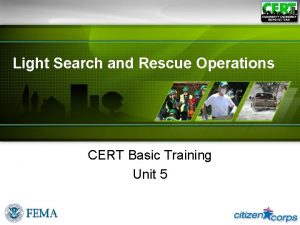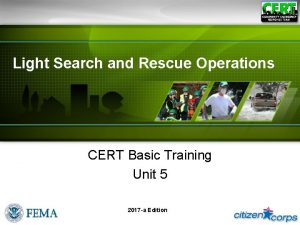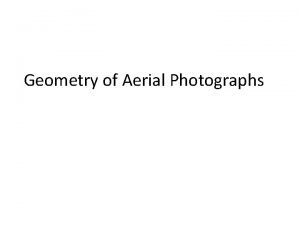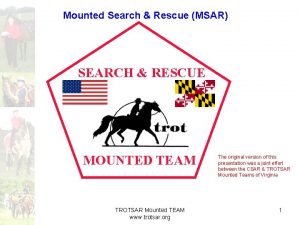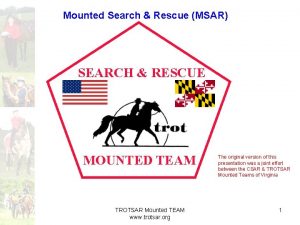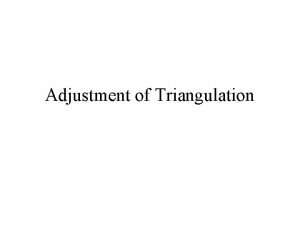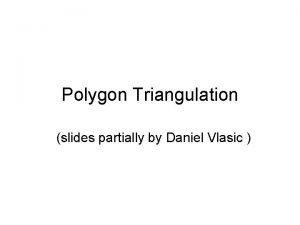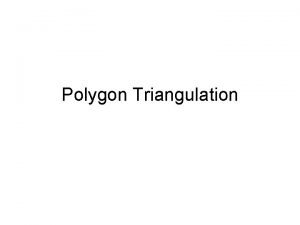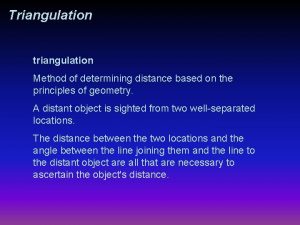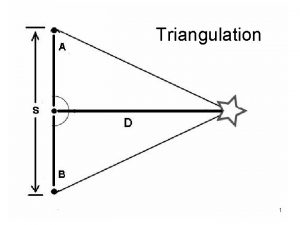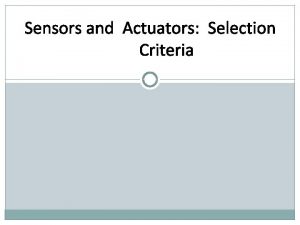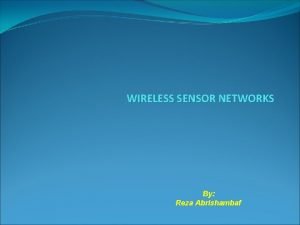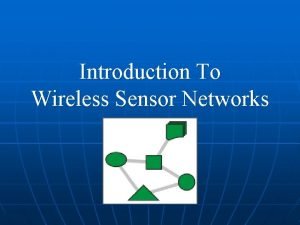Wireless Sensor Project Search Triangulation Aerial Rescue Team


















- Slides: 18

Wireless Sensor Project Search Triangulation Aerial Rescue Team (START)

Search Triangulation Aerial Rescue Team (START) Sarah Kovach – Introduction/Market Research Jason Schoenbaechler – System Overview Kevin Yu – Stargate/DSP Antonius Ismanto – Microcontroller/Conclusion Adam Porr – Audio Details Andrew Gilleon – GPS/Triangulation/User Interface Our Objective is to improve search and rescue capabilities with an aerial wireless sensor network

Market Research Similar Product – Avalanche Beacon Companies already in the market include Ortovox, Pieps, and Barryvox Disadvantages • Price on average is about $200 -$400 (needing at least 2 beacons to be effective) • Range is very narrow (~20 -30 meters) Advantages to Our Design • Price could be cut to as low as $242 • Range will cover several square miles

System Overview • Stargate Node • Sensors • User Interface

System Overview • Stargate Node • DSP Functions • Communication • Power • Distribution • Sensors • GPS • Audio • Expansion Port

Digital Signal processing (DSP) • signals come from the real world - this intimate connection with the real world leads to many unique needs such as the need to react in real time and a need to measure signals and convert them to digital numbers • signals are discrete - which means the information in between discrete samples is lost • digital systems can be reprogrammed for other applications • digital systems do not depend on strict component tolerances • digital system responses do not drift with temperature

DSP cont. Other Node

Atmel ATtiny 26 L-8 PI Microcontroller Specification: • Operating Voltage: 2. 7 V – 5. 5 V • Speed Grades : 8 MHz • ADC resolution : 10 bits • ADC speed : 15 k. SPS • ADC Channel : 11 • I/O Pins : 16 (Programmable I/O) • Functions: • A/D Converter. • Storing A/D Conversion result. • Sending A/D Conversion result along with channel index to Stargate. • A/D Conversion: • Four channel A/D Conversion. • 8 bits of resolution to have higher sampling rate. • Sampling rate at 10 k. SPS or 10 k. Hz.

Atmel Flowchart & Schematic

Acoustic Beamforming - Overview • • • Phased array of 4 omnidirectional microphones Microphones arranged on 4 corners of a square Works like a directional microphone Can form a directional “beam” in 3 dimensions Makes use of constructive and destructive interference: • Signals within beam are added in-phase • Signals outside beam are added out-of-phase • Frequency range limited by microphone spacing • Better than linear array (no azimuthal ambiguity)

Acoustic Beamforming – Details Hardware • Panasonic WM-61 A microphone • Good sensitivity for receiving weak signals, inexpensive, small • Approximately 2 cm spacing needed to prevent spatial aliasing Software • Determine the delays for the signal to travel between each microphone • Record the signal at each microphone and shift data according to delays • Sum the microphone data and calculate the combined signal energy • Repeat for all possible look-angles • The angle with the greatest signal energy is the direction of arrival

Acoustic Beamforming – Geometry

GPS Sensor • Garmin GPS 15 L • Compact • 1. 4”x 1. 8”x 0. 3” • 0. 50 oz. • Accurate • WAAS enabled • Position to 3 m • Velocity to 0. 1 knot • Low Power • 85 m. A @ 3. 3 V • Serial Interface • NMEA 0183 standard

Triangulation • Nodes transmit position information • Longitude and Latitude • Altitude • Velocity • Signal Direction • Nodes collect position information • Node performs independent triangulation • Result can be used for guidance

Triangulation • Calculation is performed between two nodes • Based on: • Positions • Velocity • Signal Direction • Equations B • Pythagorean theorem • Law of Sines A c b a C

User Interface • Passive System • User computer can “listen” to nodes • Graphical interface: • List of available nodes and status • Mapping shows: • Node locations • Triangulation result • Can be implemented on portable systems • Laptops • Tablet PCs • PDAs

Conclusion Flexibility • Increase number of microphone in the array to get better direction and triangulation using the same microcontroller. • Expansion in sensors, such as temperature and wind speed. • Able to be used in remote area without too much setup. Potential problems / issues • Microphones blind spot. • Memory capacity for storing A/D conversion result. • Lost of data due to A/D conversion multiplexing.

Questions
 Tension diagonal swift water rescue
Tension diagonal swift water rescue Aerial rescue flowchart
Aerial rescue flowchart Wireless sensor network protocols
Wireless sensor network protocols Single node architecture in wsn
Single node architecture in wsn Habitat monitoring sensor
Habitat monitoring sensor Wireless sensor network ppt
Wireless sensor network ppt Geoves butterfly wireless multi sensor
Geoves butterfly wireless multi sensor Sst wireless
Sst wireless Wireless sensor networks for habitat monitoring
Wireless sensor networks for habitat monitoring Telecommunications the internet and wireless technology
Telecommunications the internet and wireless technology Harnessing human energy multiple choice questions
Harnessing human energy multiple choice questions Paratech rescue struts
Paratech rescue struts Epirb uređaj
Epirb uređaj Beacon
Beacon Ontario search and rescue volunteer association
Ontario search and rescue volunteer association Urban search and rescue markings
Urban search and rescue markings Light search and rescue
Light search and rescue Light search and rescue
Light search and rescue Pierce county search and rescue
Pierce county search and rescue

